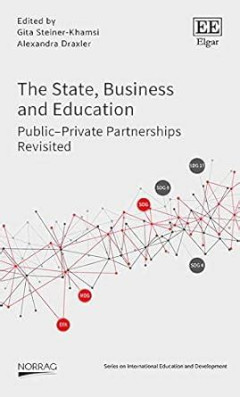Filter by
Found 2 from your keywords: author=Gita Steiner

Time in Education Policy Transfer
This book examines how time shapes the global transfer of education policies. It introduces seven temporal dimensions—such as timing, pacing, and historical layering—that influence how reforms are adopted, adapted, or resisted across different countries.
- Edition
- -
- ISBN/ISSN
- 978-3-031-82524-8
- Collation
- 250 Hal
- Series Title
- -
- Call Number
- 379

The State, Business and Education
The series reflects the mission of the global Network for International Policies and Cooperation in Education and Training (NORRAG) to produce, disseminate and broker critical knowledge on topical issues that emerge in education and development. Through its programs, knowledge production and dissemination, NORRAG contributes to enhancing the conditions for participatory, informed, and evi…
- Edition
- -
- ISBN/ISSN
- 978 1 78897 033 4
- Collation
- 206 halaman
- Series Title
- NORRAG SERIES ON INTERNATIONAL EDUCATION AND DEVELOPMENT
- Call Number
- 379.1
 Computer Science, Information & General Works
Computer Science, Information & General Works  Philosophy & Psychology
Philosophy & Psychology  Religion
Religion  Social Sciences
Social Sciences  Language
Language  Pure Science
Pure Science  Applied Sciences
Applied Sciences  Art & Recreation
Art & Recreation  Literature
Literature  History & Geography
History & Geography